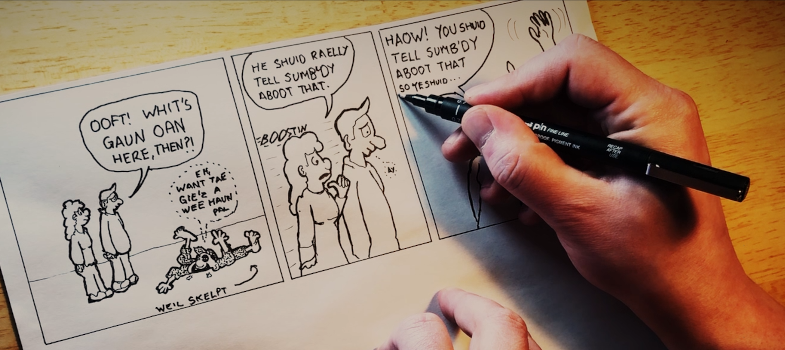Scots and literacy development

3. Tutorial
Activity 5
In this activity you will explore the connections between literacy development and Scots language in some more detail.
A
First of all, engage with the Education Scotland publication focused on the Scots language in the Curriculum for Excellence (2017). In particular, read sections 3 to 5 of the document and take some notes that are particularly relevant to your professional context and literacy development through using Scots language in the classroom.
B
The ‘3-18 Literacy and English Review’ recognises that Scots can make a strong contribution to the development of children and young people’s literacy skills. This includes Scots as part of CfE, which can help motivate some learners and their families by showing them that any and all languages they may use at home are valued in school. Scots can encourage reluctant readers and writers to become involved as texts written in Scots can capture the imagination and speak to them in a familiar voice. Similarly, offering learners the opportunity to write in Scots broadens a learner’s idea of what their creative writing can look like.
All of these literacy development skills have been built into the Education Scotland resource Keen tae Ken yir Kin, which is a learning journey structured into eight stages, with six learning episodes provided and two further lessons to be developed by those involved.
Read through the first six learning episodes of ‘Keen tae Ken yir Kin’. Make note of ideas you have which you may then use in your own teaching practice, for example in lesson planning in the next activity, Activity 4.
